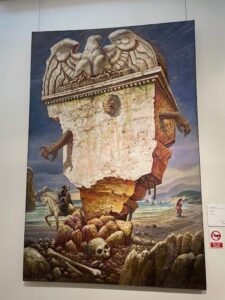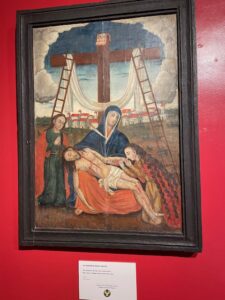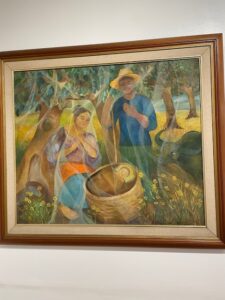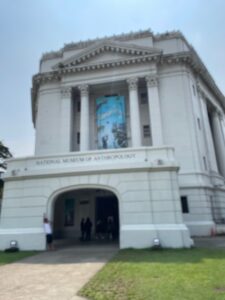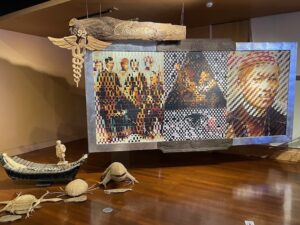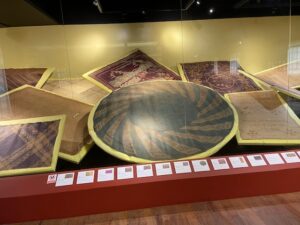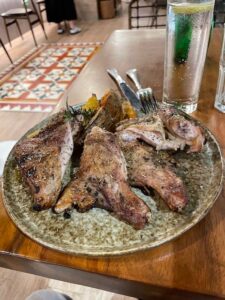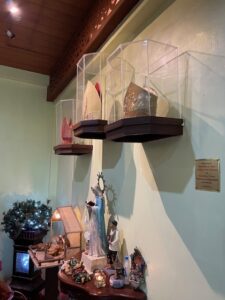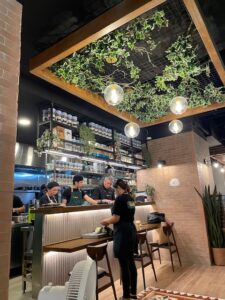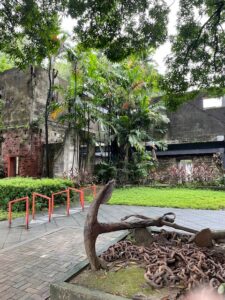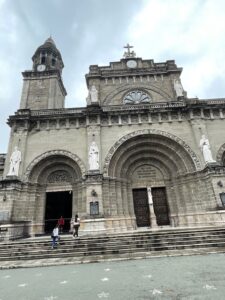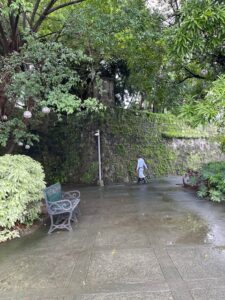Manila
Manila: Historic Capital of The Philippines
Date Visited: October 2023
Getting There
There are direct flights from Jakarta to Manila on Philippine Airlines (fairly expensive) or the budget carrier, Cebu Pacific. Both airlines offer periodic discounts, particularly Cebu Pacific, so monitor their websites, if you’re planning a visit. The daily flight on Cebu Pacific departs Jakarta just after midnight, so it is a bit inconvenient, but I’ve seen recent deals for as little as $100 per round trip, including taxes, making a journey on a redeye flight a little more palatable.
Manila is an interesting, cosmopolitan city that is a hybrid of Malay, Spanish, and U.S. culture among others. I only had a couple days to spend in the city, so I stayed near the historical Intramuros district with its 16th Century Spanish colonial legacy and focused on experiencing this neighborhood. The three national museums of the Philippines are also nearby, so I included them in my itinerary. And best of all, admission to the three is free.
National Museum of Fine Arts
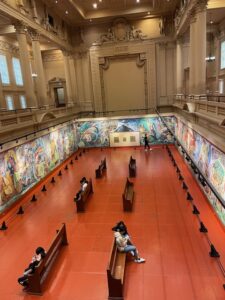
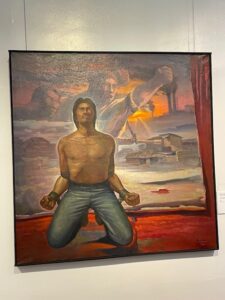
This museum is housed in the old Philippines Government House. It contains an excellent collection of works from the time of Spanish colonization to the present—my favorite museum of the group.
National Museum of Natural History

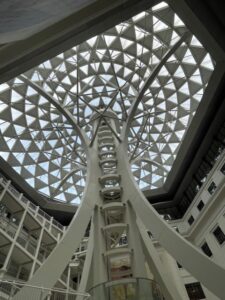

You’ll obtain a full understanding of Filipino geography, flora, and fauna if you visit this very comprehensive museum. The Grand Atrium is a stunning piece of architecture that is well worth the visit even if you’re not particularly interested in stuffed birds or dinosaur bones.
National Museum of Anthropology

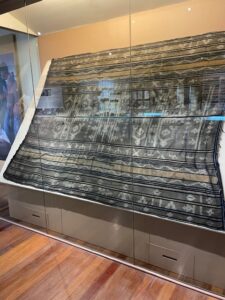
If you have limited time for museum hopping, this would be the one of the three museums I would omit. Still, it has a great collection of exhibits related to the diverse cultures found in The Philippines, and it does an excellent job of outlining the national resistance to colonization.
Intramuros
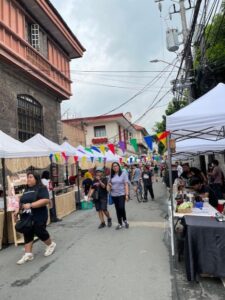
This neighborhood is the historic center of Manila. Much of it was destroyed during World War II, but some of the colonial charm has been reconstructed since then. Besides the historic landmarks, there are plenty of quaint shops and cafes and I was fortunate enough to visit on a Saturday and was able to enjoy a local street fair.
Fort Santiago
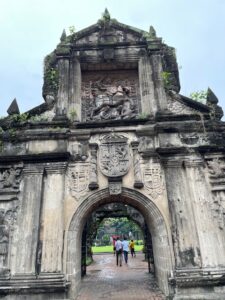
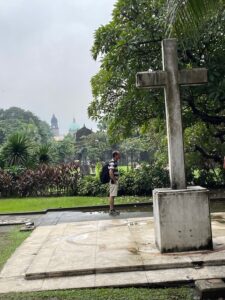
This fort, its first iteration constructed in the 16th Century, is loaded with old relics and structures. Many of the nation’s important historic events took place inside these fortifications, so a visit serves as a great orientation to Filipino history. There are also some pleasant gardens and a small collection of nice shops and eateries.
National Cathedral
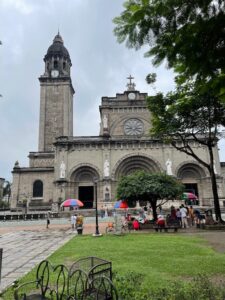
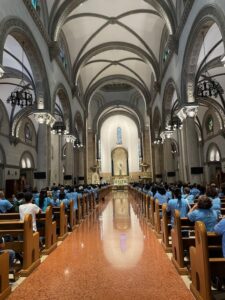
The central Catholic church of the Philippines has stood on this spot since the mid-1500s. What visitors experience is the 8th Version. Of the first six versions, one was destroyed by fire, one was flattened by a typhoon, and four were wiped out by earthquakes. The 7th version was reduced to rubble during the Battle of Manila near the end of World War II. The current version is in Neo-Romanesque style and you can attend daily mass in the Cathedral if you so choose.
St. Agustin Church
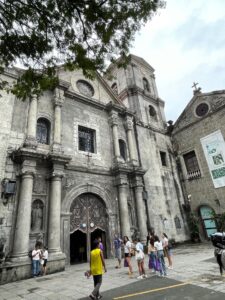

The National Cathedral might be the most important church in the Philippines from a religious historian’s perspective, but the St. Agustin Church is much more architecturally significant. First of all, somehow, it has stayed mostly intact through the typhoons, earthquakes and fires that have ravaged Manila. Even more astonishingly, it is the only one of the seven churches of Intramuros that survived the Battle of Manila in 1945. It is the Philippines oldest stone church, dating from 1607. It’s magnificent baroque architecture rivals any of the baroque religious treasures of Europe; that’s why St. Agustin has been named a UNESCO World Heritage Site. If your time in Intramuros is limited, prioritize visiting St. Agustin.
Rizal Park

On the edge of Intramuros is Rizal Park, one of the few expansive green spaces in the overbuilt Manila landscape. I spent most of my time in the delightful Chinese Garden, but the entire park is pleasant and a prime place for people watching too.
Food Options
I wasn’t in Manila long enough to get a wide selection of culinary experiences. Filipino food is made up of the cuisines of over 100 distinct ethnolinguistic groups, so one could travel the archipelago for a lifetime and still not receive a full sampling of tastes. Very generally speaking, it is a hybrid of maritime Southeast Asian influences with Spanish and American influences too.
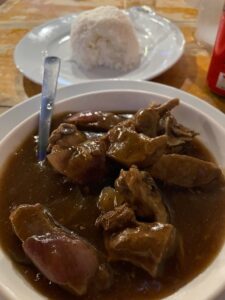

One of my favorite dishes is adobo, meat stewed in vinegar and soy sauce, so I made sure I tried that while in Manila and I wasn’t disappointed with the version I was served. In addition, I visited a strange restaurant near St. Agustin called Ristorante delle Mitre (the Bishops’ Hats). It’s a Catholic-themed establishment decorated with the old miters of famous Filipino bishops, and all the dishes are named after famous bishops, cardinals, priests, and nuns. At delle Mitre, I had a dish called pinakbet, which is a stew of kabocha squash, eggplant, green beans, bitter melon, and tomatoes flavored with dried shrimp. I also had a couple lumpia (fresh spring rolls), another signature national dish. An Indonesian eater would find the food to be seriously devoid of spices and sambal, but I found it a refreshing change of pace.
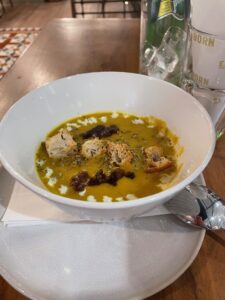
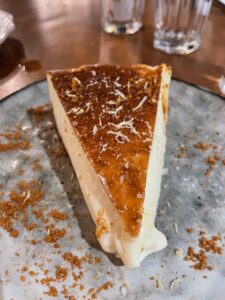
On my last day in Manila, on my way to the airport, I stopped at the Japanese-themed Mitsukoshi mall because I learned that the recently-opened Kinokuniya bookstore was located there. For my last meal in the Philippines, I ate at El Born, a Spanish/Catalan restaurant, representing that branch of Filipino culinary heritage. Everything was incredibly delicious, especially the pumpkin soup with Iberico ham and the stunning homemade burnt cheesecake. One of the best meals I’ve had in recent years.
Gallery

